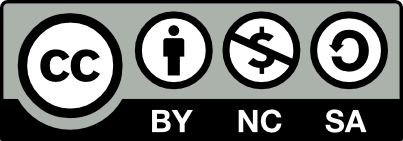As was announced in blog post six, examples of the EMoD modules will be pre-published in this blog. Below is the first module in the learning path 'Anatomy of mis- and disinformation': Outrageous beliefs.
EMoD modules consist of a series of texts of between thirty and sixty words that will consecutively be presented on your mobile screen. The short form is to make them ‘snackable’. The module Outrageous beliefs consists of nine screens.
Module: Outrageous beliefs
[screen 1]
People are capable of having outrageous beliefs which may seem like madness, in fact, it is completely normal. There are four major types of outrageous beliefs.
Not all outrageous beliefs are misinformation. Only one type of outrageous belief is disinformation.
[screen 2]
Type 1
"The Industrial Revolution and its consequences have been a disaster for the human race. /…/ There is no way of reforming or modifying the system.”
Meet Ted Kaczynski, better known as the Unabomber: math professor turned domestic terrorist.
[screen 3]
Kaczynski’s belief represents outrageous belief type one: an individual belief that is 'intuitive’: it motivates behavior.
Not all type one outrageous beliefs are destructive. Some of the finest scientists were motivated by it.
[screen 4]
Type 2
"Everyone associated with [Comet Ping Pong] is making /…/ inferences towards sex with minors.”
A now-deleted Reddit message started a conspiracy theory, ‘pizza gate’, claiming high-ranking Democrats were pedophiles working from a pizza parlor, Comet Ping Pong.
[screen 5]
Edgar Maddison Welch drove to the pizza parlor
and fired three shots. Welch represents outrageous belief type two: an
external, intuitive belief.
Welch’s commented: "I just wanted to do some good and went about it the wrong way.”
[screen 6]
Type 3
While Welch and others acted on their belief in ‘pizza gate’, thousands did not. They continued their lives as if nothing disturbing was happening even though they believed the conspiracy theory to be true.
[screen 7]
The thousands are examples of outrageous belief type three: an external belief that is reflective: the belief has little or no consequences for a person’s behavior.
The distinction between 'intuitive’ and 'reflective’ beliefs was created by Dan Sperber.
[screen 8]
Type 4
"I’ve been saying the last few months, get ready for big mass shootings, and then magically, it happens.”
Meet Alex Jones who claimed that a mass shooting at the Sandy Hook Elementary School, in which 26 people were killed, was "completely fake with actors” and that no one actually died.
[screen 9]
Jones represents outrageous belief type four, disinformation: a false belief as a means to a goal, in Jones’s case financial gain.
Jones later admitted that he believed the Sandy Hook shooting did occur.

